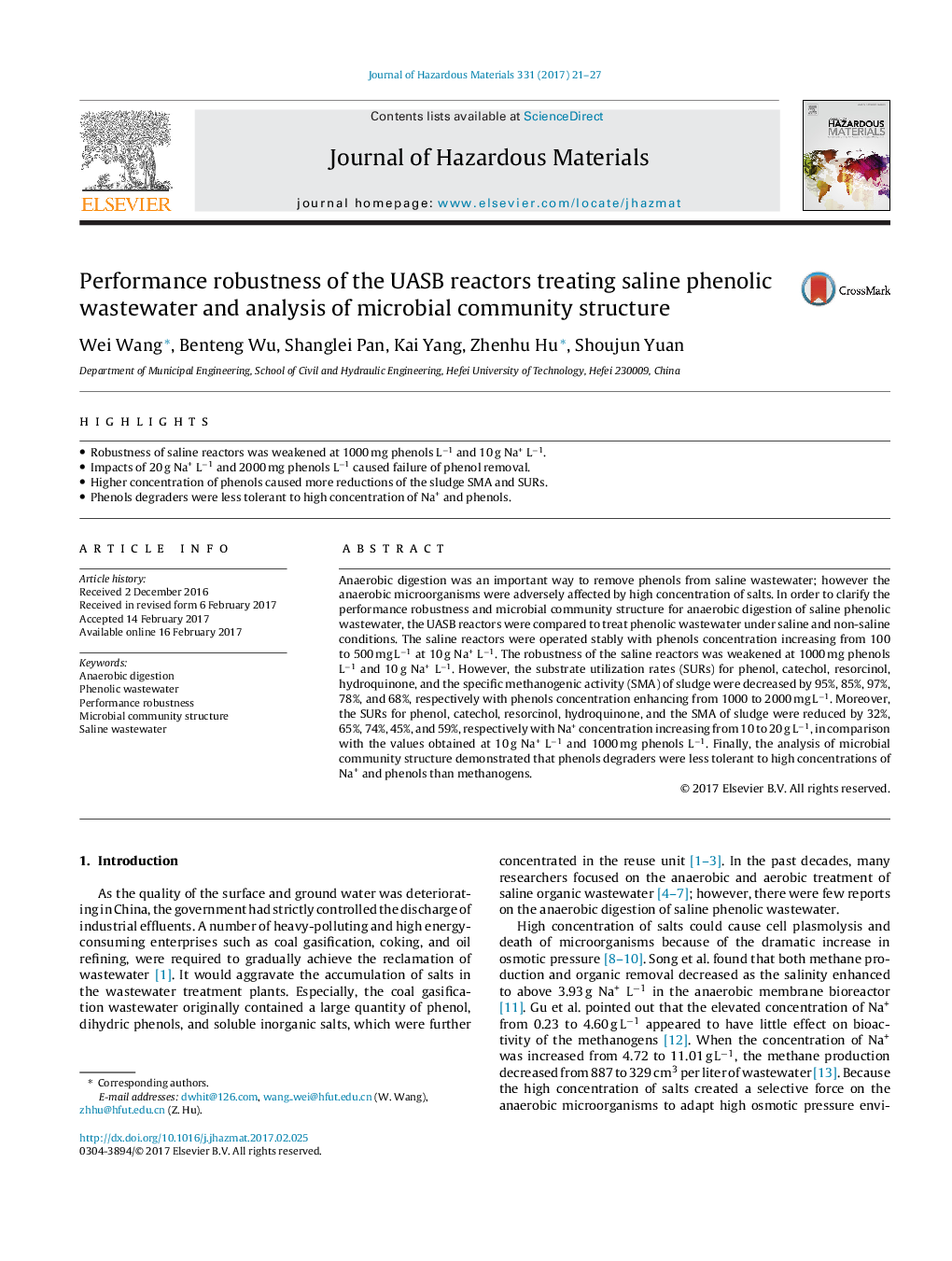| Article ID | Journal | Published Year | Pages | File Type |
|---|---|---|---|---|
| 4979609 | Journal of Hazardous Materials | 2017 | 7 Pages |
Abstract
Anaerobic digestion was an important way to remove phenols from saline wastewater; however the anaerobic microorganisms were adversely affected by high concentration of salts. In order to clarify the performance robustness and microbial community structure for anaerobic digestion of saline phenolic wastewater, the UASB reactors were compared to treat phenolic wastewater under saline and non-saline conditions. The saline reactors were operated stably with phenols concentration increasing from 100 to 500 mg Lâ1 at 10 g Na+ Lâ1. The robustness of the saline reactors was weakened at 1000 mg phenols Lâ1 and 10 g Na+ Lâ1. However, the substrate utilization rates (SURs) for phenol, catechol, resorcinol, hydroquinone, and the specific methanogenic activity (SMA) of sludge were decreased by 95%, 85%, 97%, 78%, and 68%, respectively with phenols concentration enhancing from 1000 to 2000 mg Lâ1. Moreover, the SURs for phenol, catechol, resorcinol, hydroquinone, and the SMA of sludge were reduced by 32%, 65%, 74%, 45%, and 59%, respectively with Na+ concentration increasing from 10 to 20 g Lâ1, in comparison with the values obtained at 10 g Na+ Lâ1 and 1000 mg phenols Lâ1. Finally, the analysis of microbial community structure demonstrated that phenols degraders were less tolerant to high concentrations of Na+ and phenols than methanogens.
Keywords
Related Topics
Physical Sciences and Engineering
Chemical Engineering
Chemical Health and Safety
Authors
Wei Wang, Benteng Wu, Shanglei Pan, Kai Yang, Zhenhu Hu, Shoujun Yuan,
